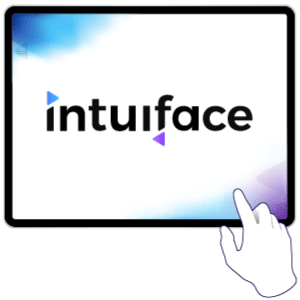Interactive Displays Increasing Quality & Decreasing Cost

The field of interactive multi-touch displays has been growing by leaps and bounds in recent years. Once seen as devices reserved for organizations willing to live on the technological forefront, touch displays today are becoming far more common across a wide range of applications. There are some very good reasons for this recent rise in popularity.
Today, multi-touch interactive displays can be found in schools, retail
environments, museums, hotels, television studios, and conference centers. Broadly speaking, they can be found wherever one wants to engage with members
of the public in an entertaining and fully immersive way.

A Brief History on Multi-Touch Screens
The technology behind multi-touch screens was first developed in the early 1980s. Their original intent was to enable designers to manipulate computer graphics with their fingers. In the years that followed, technology evolved quickly, giving rise to touchscreens on PDAs, personal computers, smartphones, and tablets.
Thanks to the meteoric rise and popularity of tablets and smartphones, even the most non-technical of consumers quickly became to interactive touchscreen display usage. It has not gotten to the point where interactive DOOH displays are expected and where static signage can lead to frustration. Undeniably, large-format multi-touch screen technology has become a widely used tool in the fields of collaborative design, medicine, and education.

Touchscreen Technology
Speaking more precisely about touchscreen technology, as stated by Computer World,, “not all touches are created equal”. There are several touch technologies available on the market, including surface-based touch technologies such as resistive and capacitive detection, and perimeter-based technologies such as infrared and optical detection.
The number of touchscreen manufacturers has grown significantly. For example, Samsung now ships low cost, all-in-one touch displays, the Tizen-based SMART Signage Platform, using projected capacitive (PCAP) technology. AOpen – an electronic manufacturer headquartered in Taiwan - is bringing Chrome-based devices to the masses with the all-in-one Chromebase. And the Shenzhen factories in China are producing an unprecedented number of Android-based displays.
A simple search on Alibaba shows almost 600 suppliers selling 47K (yes, that’s right!) "different" models of Android-based kiosks starting as low as $150. The touch display market itself is estimated to reach ! The era of interactive displays is now and - if you're reading this - now is the time to be bold and take a leap using interactive content.

Touch Technology Costs
Just as one might expect for emerging technology, the initial cost of interactive displays was initially quite high. Since then, however, the cost has dropped significantly. You can now find a very good quality 42-inch multi-touch display for under $1500. As mentioned before, you can even find Android-based kiosks at a price as low as $150.
Touchscreen Software Breakthroughs
The remaining hurdle preventing companies from exploring the use of interactive displays was the programming expense. For virtually any touch-first application, code would need to be written, adding a services cost that could easily reach six figures.
Now, thanks to specialized platforms like Intuiface, businesses of any size can create functional and attractive interactive applications for any audience without having to write a single line of code. Intuiface touchscreen software works perfectly with any of the hardware options mentioned above. Within it you can choose from preexisting templates or start from scratch to create a design using your own content, tailored to any screen size for any Windows, iPad, Android, Chrome or Samsung SSP device. You can even combine multiple screens in one application to create an interactive display wall. And with capabilities like remote deployment, scheduling and the ability to track events to identify user preferences, even the most agile business can begin building interactive experiences with an all-but-guaranteed ROI. The cost? Simply a licensing fee, no services at all.
With all of these advancements in touch-first technology at incredibly affordable prices, it's now much easier for virtually any business or organization to introduce interactive displays in their environment.





